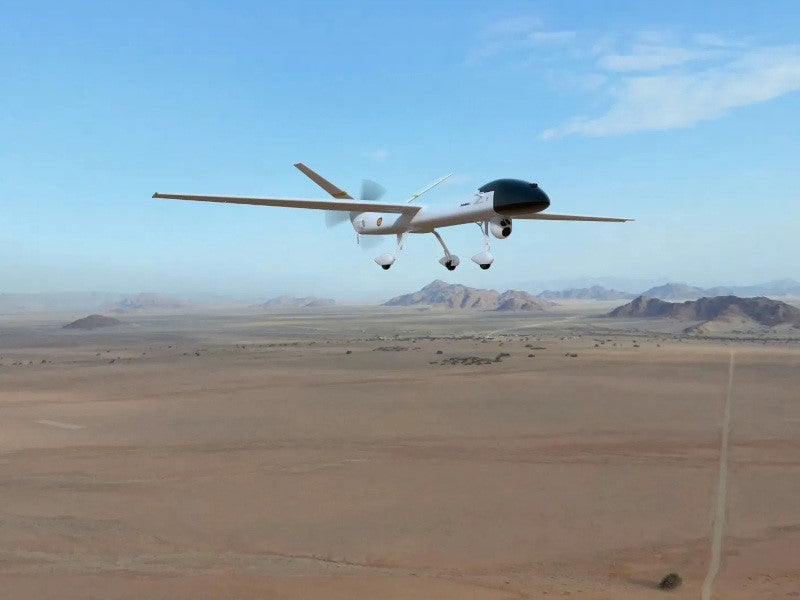SIRTAP is a high-end tactical unmanned aerial system (UAS) designed by aerospace company Airbus to handle a diverse range of missions.
The advanced tactical remotely piloted aircraft system (RPAS) offers dual functionalities, allowing for missions tailored to meet the operational needs of clients in both institutional and governmental sectors.
The UAS is capable of operating in the most adverse environments and will be certified for flight in segregated airspace and pursue civil operations, all using a single platform.
In the future, the tactical UAS will be capable of working in conjunction with other platforms, seamlessly integrating into a comprehensive system of systems.
The first flight of the SIRTAP prototype is anticipated in 2025.
SIRTAP unmanned aerial system design and features
SIRTAP is designed to function in all weather conditions as its ice protection and temperature range system allows it to operate efficiently from -40°C to +50°C.
It has a maximum takeoff weight of 750kg (1,650lb) and can operate in crosswinds exceeding 20kt.
The UAS has a range exceeding 2,000km, including both line of sight and beyond line of sight capabilities via SATCOM.
It has a maximum ceiling of more than 21,000ft, an endurance of more than 20 hours, and can achieve a maximum speed exceeding 110kt True Airspeed (TAS).
The wings and rotor of the SIRTAP can be quickly removed for transport in standard containers, making it suitable for both land and air travel. For instance, a transport aircraft such as the C295 can accommodate two SIRTAP units in a single flight.
The UAS is suitable for operations on an unpaved 800m runway and includes autotaxi capability. It is free from components regulated by the US International Traffic in Arms Regulations, which will be a key advantage in the international market.
Intelligence, surveillance and reconnaissance capabilities of SIRTAP UAS
SIRTAP is designed for high-level intelligence, surveillance and reconnaissance (ISR) tasks and is suitable for both land and sea operations. It offers a quick response for detailed target inspection.
Its advanced ISR capabilities include armed ISR for convoy escort, area surveillance, force protection and maritime surveillance.
SIRTAP is equipped for border surveillance to manage migration flows, ensure border security control and conduct search and rescue operations in remote areas.
It can help monitor illegal activities such as piracy, drug trafficking and illegal fishing, as well as support firefighting efforts.
ISTAR and C4I systems integration
The UAS enhances growth capability through tactical intelligence, surveillance, target acquisition and reconnaissance (ISTAR), including target designation and comprehensive weapons integration.
In addition, SIRTAP guarantees seamless integration and interoperability with the customer’s command, control, communications, computers and intelligence (C4I) systems.
Payload capacity
The UAS can carry a payload of more than 180kg (396lb), offering multi-payload capability. The cruise altitude varies depending on the actual mission payload.
The payload capabilities of SIRTAP include electro-optical/infrared systems, laser designator systems, a synthetic aperture radar/ground moving target indicator, multi-role radar, an automatic identification system, electronic warfare, electronic intelligence and communications intelligence.
Contractors involved
Sener Group, an engineering and technology solutions provider, was contracted by Airbus to design and develop the LOS data link systems for the UAS in June 2024.
Volz Servos, an actuator specialist based in Germany, won a contract to supply its DA 26 actuators for the air conditioning system of the UAS.
Amper Group, a telecommunications company, was chosen by Airbus to supply the voice communications system for the UAS.
UAV Navigation-Grupo Oesia, a guidance, navigation and control solutions provider based in Spain, is also involved in the development of the SIRTAP UAS.
SIRTAP orders
In November 2023, Airbus secured a contract from the Spanish Ministry of Defence for the development and acquisition of SIRTAP.
The contract covers nine systems, with each system comprising three unmanned aerial vehicles and one ground control station. Additionally, two simulators will be provided for training the Spanish Army and the Spanish Air and Space Forces.




